Beyond Screens: How Podcasts and Social Media are Democratizing Science Storytelling
In this ever-evolving digital age where a plethora of information—accurate and inaccurate—continues to be added and trafficked, it can be an overwhelming space to explore for both creators and viewers. It can also be an incredibly rewarding space, so is the case in the rich cyber world of science. At the 2025 Sloan Film Summit, the triennial collaborative art-science event between Film independent and the Alfred P. Sloan Foundation, we had the privilege of gathering some of the most accomplished and up-in-coming science communicators for the New Media Panel, where they shared some of their personal experiences and insights related to contemporary science communication. Moderated by Ali Vanderkruyk, the panelists included: Emily Graslie (The Brain Scoop), Dr. Kiki Sanford (This Week in Science), Lindsay Nikole (Zoology Science Communicator), Latif Nasser (Radiolab), and Isaias Hernandez (Queer Brown Vegan).
On what drew them to science communication on digital platforms rather than more traditional media—academic journals, traditional science, etc.—for Graslie and Hernandez, representation was a huge factor that motivated them to get into the online science community. “I got into science because I didn’t see any women on YouTube,” Graslie said, “I might not be the best, but I’m going to show up first.” She was someone who went against the grain—studied for a fine arts degree rather than a science degree. Regardless, she and her support system believed in amplifying the natural curiosity and valuable knowledge of a non-scientist, seeing as a majority of people are not scientists themselves. Through The Brain Scoop, she “became a conduit for the audience.” Hernandez recalled not seeing anyone in the world of science who reflected him growing up, someone Brown and of the LGBTQ+ identity. While studying environmental science in college, he admitted to not being able to name at least “five Indigenous environmentalists” or “five Latino environmentalists,” which he viewed as a red flag. This motivated him to perform his absolute best, because he believed in the value of his lived experience represented in the world of science. Back in Tumblr’s heyday, he had a private blog where he talked about spirituality, climate, and education, and kept his identity anonymous until a friend inspired (or well-intentionally forced) him to create a public account. Queer Brown Vegan was the result. Also, science educators who positioned themselves as strict authoritative figures were all too common for him. It was important for Hernandez to “talk about environmentalism through a working-class lens.” This aspect in his approach helped him navigate how to “use communication not as a tool for authority, but rather empowerment.”
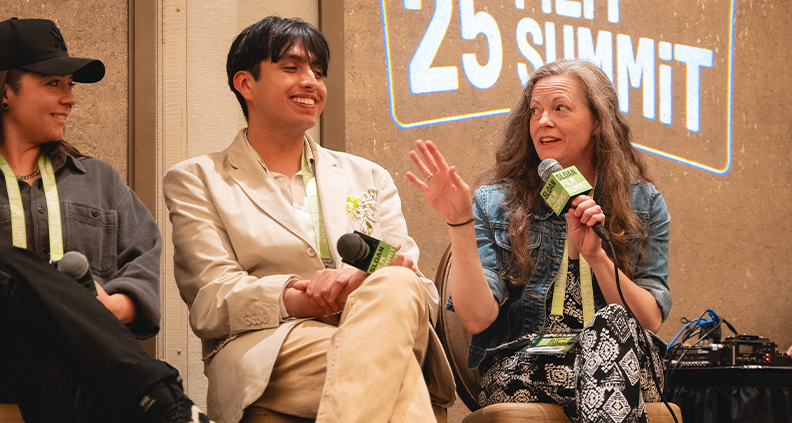
Dr. Sanford was also creating videos on YouTube, but not in the same way as Graslie or other creators. Instead, she found her footing in “podcasting before podcasting was podcasting.” She started This Week in Science as a college radio show, motivated by the very minimal science coverage on college radio at the time. “I was recording the show on cassette tape, and then technology advanced”—MP3 recorders, minidisks, etc. Then, in the early 2000s, she uploaded her MP3s on her website. Soon people started downloading and subscribing by the numbers, and Apple’s introduction of iPods and the podcast feature was almost heaven sent. “Suddenly I was talking to people around the world,” she said, “it became this really amazing opportunity…to be able to actually have this voice that was beyond terrestrial radio.” These new avenues of mass communication widened the door for quick, accessible, and unlimited topics of discussion. One of her biggest career takeaways is being able to adapt to new technologies, something we’ll no doubt continue to see more of.
Fresh out of college during the COVID-19 pandemic, Nikole lived with her parents and happily shared all the facts she learned in school. “Can you tell somebody else?” she recalled her parents joking, and in fact she did on the short-form social media platform TikTok. “It was really cool to just be able to upload a video from my room talking about everything that I learned in college, and reach an audience of any varying size.” She quickly noticed that people were more interested in “freaky creatures that went viral” over complex concepts. In response, Nikole gained a following by creating content based on what people were looking for. She later made her way to the long-form platform YouTube, where she was able to expand on the content that gained attention on TikTok.
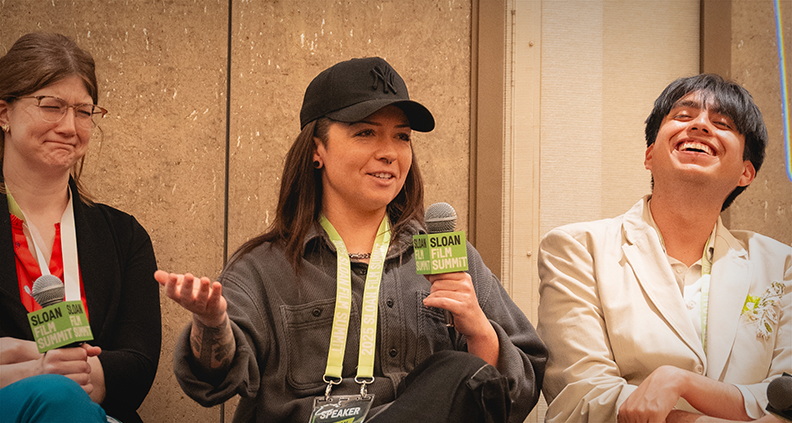
Latif Nasser initially studied to become a playwright, but was “too timid” and went to grad school where he took a course on the history of science. “All the people in my grad student program—the professors and students—acted like they already knew this stuff and it wasn’t that interesting,” adding to his frustration, “how is it so obvious and boring to you, and not obvious and—if you frame it right—not boring to other people.” He pursued one of the traditional ways of science communication through writing scholarly articles, only to be constantly rejected from publications. “I wasn’t following the format or I wanted to keep in a stupid joke or whatever it was,” he said, pointing to the restrictions of traditional science communication; professional and formal over personal and casual. Radiolab was one of the first podcast’s he ever heard, and connected with its format—“it’s funny and it’s dumb, but it’s smart.” After much trial and error, he made his way to the podcast that suited his scientific approach, and thank goodness for that. “I felt intellectually constipated,” he said, which is probably more relatable than we want it to be.
In discussing how social media helps develop a conversation around complex topics that may be overlooked in mainstream science education, Instagram gave Hernandez a place to write out all his thoughts piece by piece. He was seeing science communicators discuss interesting concepts that were accessible to him as a college graduate in science, but noticed a missing “cultural component.” Terms and meanings truly aren’t enough to understand the functioning and impact of any given thing. “I can’t just talk about these…terminologies that are coming from academia,” for example something like petro-masculinity; the study of socially-supported patriarchal power to the fossil fuel industry and its harmful effects. He believes that approaching science communication in this way has the ability to inspire greater empathy in people for each other and the planet, and the intimate-like atmosphere between the viewer and social media already exists to help achieve these greater goals. “We can’t save one another without each other.”
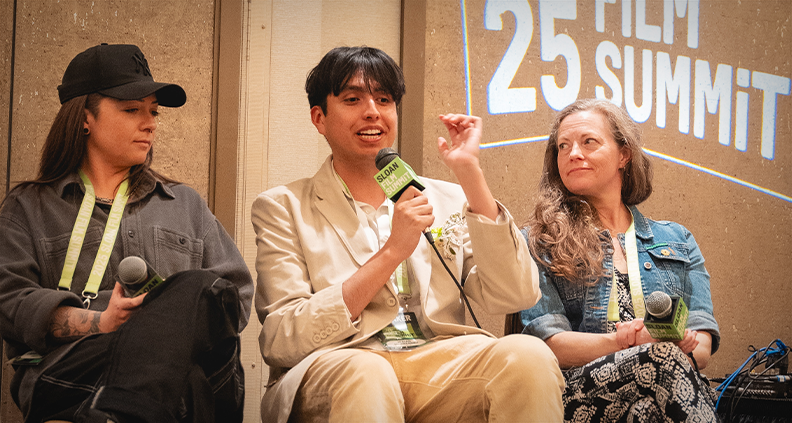
Lindsay approaches her content by positioning herself as a friend, learning with the viewer as she goes along. Through a friendly disposition when educating or communicating, people can learn new things without shame of not already knowing. Additionally, she considers long-form content as a great format for being able to say “I’m not really sure about how I’m telling you this information right now…but you can make your own opinion based on what I just presented to you.” This attitude is difficult for her to navigate in short-form content, but when done right one of this format’s perks is the ability to deliver the main message simply and immediately. It’s no secret that digital media today seems to cater towards short-attention spans, which is why TikTok and YouTube Shorts continue to grow in popularity. Nevertheless, long-form and short-form content offer variety for different audiences to enjoy.
Dr. Sanford leads her podcast with conversation rather than attention-grabbing antics—it’s embedded in the conversation itself. She and her co-hosts each hold their own expertise, and the show’s format is mindful of the audience through engagement practices. “Part of the process of what we do is rooted in the studies, the methods, the results, but the conversation is all about the questions,” adding, “we want to be a credible source of information, but we also want to be the radio DJ for science!” She affirms that serious conversations are had and absolutely should be, but there should be room for humor and levity; examples of which have even existed before social media (Bill Nye the Science Guy just entered the chat). Nasser gleefully expresses how spontaneous theories and hypotheticals are embraced on his show. Although he thinks it’s perfectly fine “to do the scientifically accurate thing” and accept the facts about whatever topic as they are, he conquers that it’s a lot more interesting and exciting to imagine the what-ifs; “It’s so de-centering to imagine the world from a bird’s eye view.” Radiolab’s sound design greatly adds to the experience, with original composers creating captivating sounds to compliment each episode. All of these factors—the science, the levity, the sounds—which may seem like an unlikely bunch on paper can indeed work well together and be equally educational.
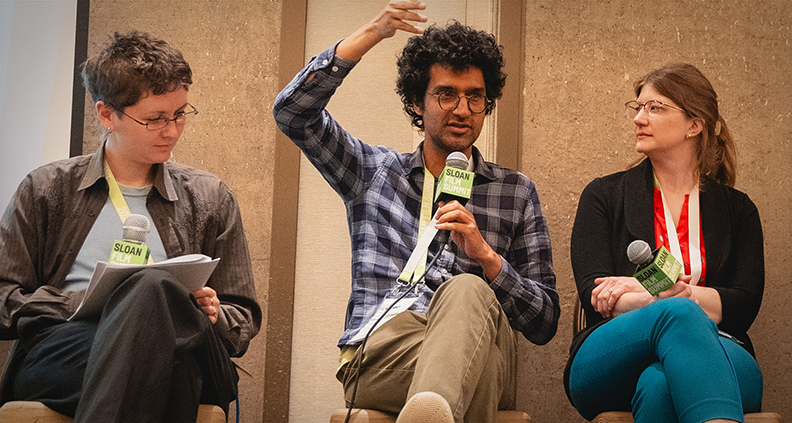
Then, there’s the relationship between traditional scientific authorities and independent creators. A topic that Graslie knows all too well. Shortly after launching The Brain Scoop, Chicago’s Field Museum “snatched her up to get her before anyone else could.” She recalled her recruitment happening during a transitioning period within the museum between “old guard and new guard.” It was primarily the younger staff and women who advocated for her involvement and supported her work. As a young painter-turned-YouTuber, Graslie was viewed outside the mold of an acceptable science museum staff member by senior staff and curators. Tasked with communicating the museum’s information through contemporary media, the tension between “old guard and new guard” was felt. These adjustments weren’t easy for everyone, but proved to be positively impactful. By the end of her contract with the museum, the show she poured into wholeheartedly belonged to them, leaving her no choice but to have to start a new project from scratch. “It was like a reset,” she said. Then, in 2023, a fan of her work inspired her to again try to obtain the show rights. Coincidently, a marketing head who actively refused to let Graslie have the show was let go. Simultaneously, there was a new hire in the museum’s legal team who sympathized with her case, and helped her acquire the rights to the show within a few months. “I got my credibility back.”
The digital science communication sphere, like other spheres in the digital space, is consistently reshaping and competing. With plenty of science communicators producing content, of varying backgrounds and formats, algorithmic content competition becomes a tricky thing to navigate. It’s one of those things that no passionate science communicator necessarily wants to deal with, but many do in the goal of reaching an audience and the benefits that come with that. Algorithms are obstacles that creators navigate at their own pace. Dr. Sanford chooses to ignore the algorithms. “Every time I’ve tried to focus on those aspects of creating…it’s taken away from the conversation and what I actually want to do.” So, she happily marches to the beat of her own drum. In response, Graslie stresses the value of having a team—even if it’s small—where each person can better focus on their part of the project, because creating can be quite “soul-sucking” as an independent creator. It can be exhausting having to build a project and simultaneously reach an audience on many platforms out there. That’s why for some creators locking in on one or two is the best way to go. It’s about “how your skill set can be applied to the best outlet.”
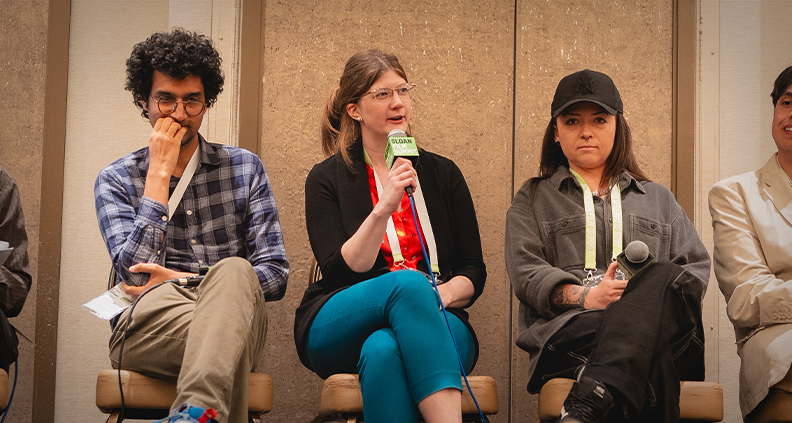
On the current state of contemporary science communication, Hernandez has observed a rise in corporations rewarding “pretty privilege” in the next generation of science communicators. “The amount of pretty privilege you need to have in this space now where brands are…going to put you in Vogue…and make you the next public figure luminair,” as he put it, is problematic behavior in its attention to the superficial and the imperious messages that it sends. “We’re in a new world that’s measuring us not just on how well we can speak and how much we know,” he goes on to say. Good-looks and attractive aesthetics could then be viewed as developing additional invisible requirements for aspiring science communicators. However, it’s safe to say that we still live in a society that values substantial science over sexy scientists.
Graslie would like to see more museum content out there. “I want to see every museum collection,” and in order for that to happen there has to be a better infrastructure in place to support the creators who would like to make that possible. Dr. Sanford addressed the increased interest in unpacking science as it’s been primarily constructed through a colonial lens. “It’s still an old man’s club,” she said. The panelists would love to continue to see support for independent creators and collectives, a near-urgent call stemming from an increasingly lack of federal and organizational financial support. “We as a media landscape are really losing to so much misinformation and disinformation,” lamented Hernandez. False information is a self-explanatory disservice to all. As Graslie passionately put it, the new media panelists remain optimistic that the public won’t “undermine the critical value that [they] have with [their] platforms.” New media science communicators are not traditional science educators, and that’s the idea. Perhaps an argument is to be made about how this current science communication ought to be packaged and delivered, but there’s no question that the presence of science in the Digital Age is valuable. Luckily, we have educated and creative people such as these nurturing that space.
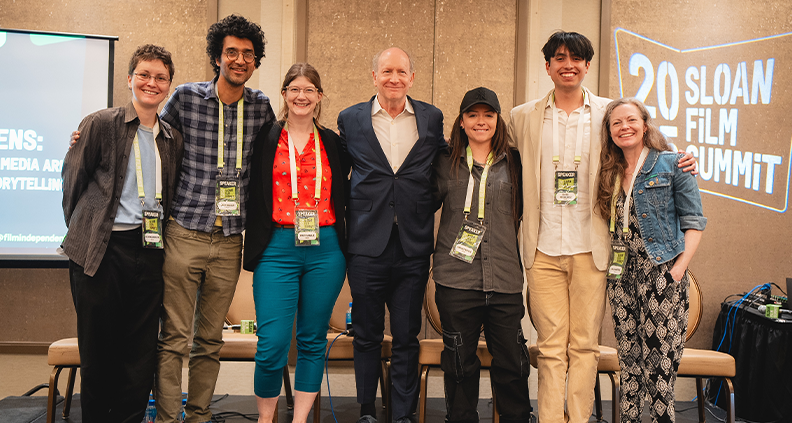
Where to find them:
Emily Graslie (The Brain Scoop): YouTube
Dr. Kiki Sanford (This Week in Science): Apple Podcasts, YouTube, Spotify
Lindsay Nikole (Zoology Science Communicator): Instagram, TikTok, YouTube
Latif Nasser (Radiolab): Apple Podcasts, Instagram, Spotify, YouTube
Isaias Hernandez (Queer Brown Vegan): Instagram, TikTok, YouTube
The Sloan Film Summit, launched in 1999, is part of Sloan’s greater efforts through its Public Understanding of Science and Technology initiative. Celebrating eight iterations, this year’s Summit (the fourth consecutive one produced by Film Independent) is a celebration of the program’s wide-ranging success supporting emerging filmmakers, while also bringing together a new group of artists and scientists to highlight how art and science interact and collaborate.
We’re thrilled to celebrate the arts and sciences with inspiring minds in both fields.
For over 40 years, Film Independent has helped filmmakers get their projects made and seen. The nonprofit organization’s core mission is to champion creative independence in visual storytelling in all its forms, and to foster a culture of inclusion. We support a global community of artists and audiences who embody diversity, innovation, curiosity and uniqueness of vision. To support our mission with a donation, click here.
Keep up with Film Independent…